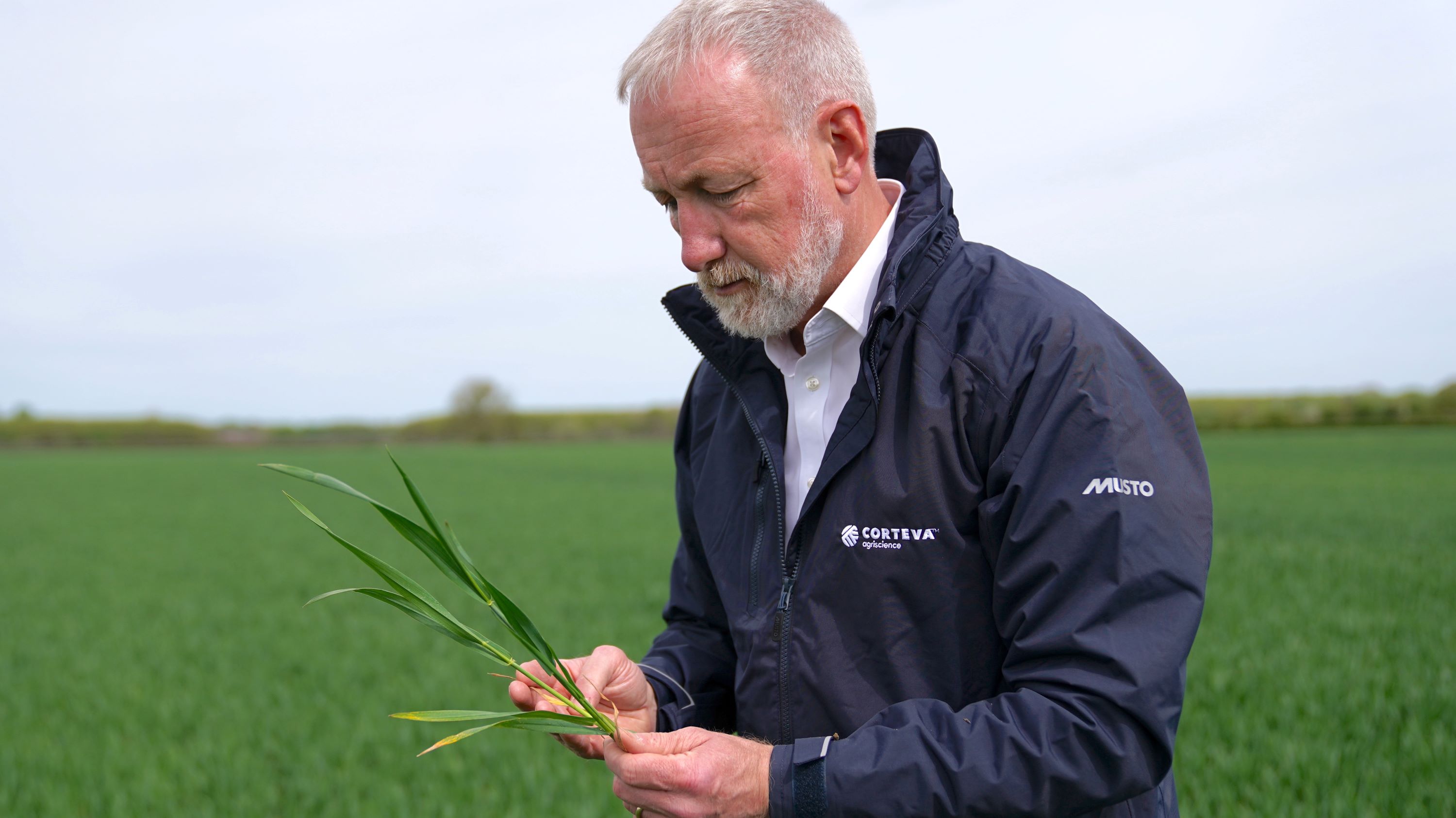Protecting yield potential in winter wheat crops should be a key consideration ahead of T2 fungicide sprays in May, Corteva Agriscience says.
A prolonged dry period has enabled crop protection programmes to be applied in a timely manner so far this spring, and in field walks across Yorkshire and Warwickshire this week, good control of septoria and rusts was evident.
“The UK’s main cereal-growing regions have not experienced the sort of conditions diseases need to thrive, so wheat crops are generally looking clean,” said Craig Chisholm, Corteva’s Field Technical Manager for Fungicides.
“With septoria still clearly evident in the base of the crop, we know that a couple of rain events can change the picture significantly. Protecting the obvious potential in the crop will drive recommendations for T2 sprays, and maintaining a robust fungicide programme will ensure growers see a yield response come harvest.
“Decisions will also take into account the wheat price, as we expect growers to be looking for a cost-effective solution to protect their investment if the weather turns wet in the coming weeks.”
A Yorkshire perspective
After walking wheat fields in North Yorkshire on Monday 28 April, Craig said septoria lesions were limited to the lower leaves.
“There is disease present, but it is contained lower down the plant and the T1 spray which has just been applied should do a good job at keeping it out of new growth,” he said.
“Untreated trial plots nearby clearly showed yellow rust could thrive, but in the crop it has been kept under control with a good T0.”

Dry in the Midlands
Corteva’s UK & Ireland Technical Manager, Sally Harris, said there had been very few rain events in a field in Wellesbourne, Warwickshire, for six weeks prior to her crop inspection on 25 April.
“Septoria pressure is varying from post code to post code depending on the variety, drill date and whether there has been any rain during the spring,” Sally said.
“From the crop of Cheer winter wheat in Wellesbourne we can see there is a reservoir of septoria in the base but the upper canopy is pretty clean.”
Craig and Sally agree that T2 decisions should weigh up a number of factors, including the yield potential, visible disease pressure, and the weather forecast.
“The four- or five-week period from T2 is vital in terms of building yield, so a robust T2 fungicide will act as an insurance policy against any rain which may come and raise disease pressure during that period,” Sally said.
Corteva advises that its Univoq™ fungicide has been a proven, robust and reliable option against septoria and yellow rust over the past three seasons, giving growers the best chance of enhancing yields and optimising the return on their investment.
The rate can be adjusted from 1.1l/ha to 1.5l/ha to reflect the variety and level of disease risk.
“From a resistance management point of view, it is best practice to use alternating modes of action as much as possible,” Sally said. “The Inatreq™ active molecule is unique and has no known resistance so works well in a programme that has already included an SDHI or azole, for example.”

Growers can watch Craig’s field walk in North Yorkshire and Sally’s visit to Warwickshire in the videos below.



